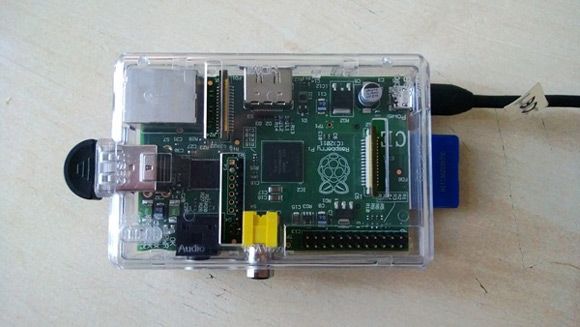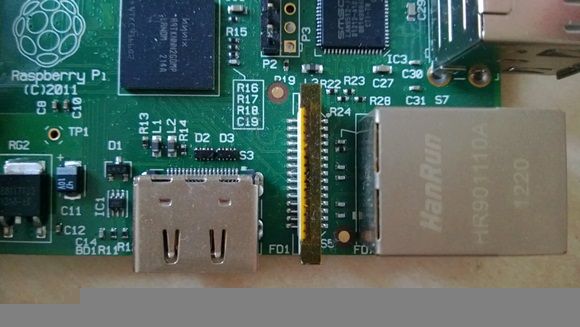If you’ve been following our recent articles about the Raspberry Pi, you’ll know that it can be set up as a media streaming client with a dedicated XBMC build and you should also be aware that by teaming the device up with any additional hardware (external hard disk drive, cables and adhesives), it can become the complete media center.
However as fantastic a solution the Raspberry Pi is to your various HTPC requirements, there are a few things that it cannot do too well. Some additional hardware may prove useful in some situations, but in others – such as where DRM or proprietary software is required – there is currently no way around the limitations.
You’ll find more about using and setting up the Raspberry Pi in our new guide.
Subscription Streaming Services: What Works, What Doesn’t?
The popularity of the Raspberry Pi has seen it chosen by thousands as a compact Raspberry PI home theater device. However, while it works superbly with XBMC to stream content stored on your SD card or on an attached device (local or network), the Raspberry Pi is limited when it comes to certain popular online TV and movie subscription streaming services.
Lovefilm & Netflix
As popular as Lovefilm and Netflix have become over the past couple of years, neither service offers a plugin, add-on or app that will enable you to view its content on the Raspberry Pi, with or without XBMC.
While there are XBMC plugins for both services, these will only work on Windows computers. Because the Raspberry Pi is running Linux and is powered by an ARM processor, the plugins are unsuitable for reasons of compatibility and because they employ the Microsoft Silverlight software for streaming content. This is a proprietary system, so there is no way to access the stream.
However, all is not lost. There is a good chance that an Android build for Raspberry Pi will be able to run Lovefilm and Netflix – and if these two companies see how many Raspberry Pi computers have been sold (now over one million!) then there is also a good chance that they might soon see sense…
Services that Will Work
This isn’t to say that there are no streaming services that run on the Raspberry Pi using XBMC. Hulu will work, for instance, as will UK TV catch-up streaming provided by BBC iPlayer, Channel 4’s 4OD and ITV Player.
Booting up a Raspberry Pi home theater running XBMC and checking the various add-ons that are available, meanwhile, will enable access to YouTube, Vimeo and a wealth of streaming services such as German TV and various niche channels carrying video games, technology shows, and movie trailers.
Storage: Local or Network?
With XBMC installed, the Raspberry Pi can playback music, video, and photos on devices attached locally and remotely. You’ll probably find that the best solution is to either use an external hard disk drive or a network drive (either a NAS or a hard disk drive on your PC that has been shared to the local network).
Although SD cards can be used for storage, the largest supported size for a SDHC card is 32 GB. This probably won’t hold all of the media that you wish to watch, and using the same storage device for media and for running the operating system isn’t ideal when the OS fails and the card needs to be reformatted.
Similarly, maximum storage capacities of USB flash sticks don’t come close to external hard disk drives or network drives, so while they’re useful for playing back a small number of video files, USB flash devices shouldn’t be considered a permanent storage solution for a Raspbmc.
Watching Live TV on the Raspberry Pi
There are a couple of ways that you can watch live TV on Raspbmc. The first requires the most up-to-date build of XBMC (version 12 and above) and a PC on your home network that is equipped with a TV card or USB TV tuner. Acting as a server, this computer will make TV signals available to your Raspberry Pi, with the XBMC software providing a front end for the TV card, enabling you to remotely change channel.
The alternative is to use a USB TV tuner that is compatible with the Raspberry Pi. Such devices are produced by Sundtech but will require you to purchase the MPEG-2 license key for the Raspberry Pi (just £2.40) in order to successfully decode the digital TV streams.
Raspberry Pi: Ideal as a Media Center with Some Limitations
If you own a Raspberry Pi then you have in your hands a hugely versatile mini-computer that can be used for teaching yourself programming, as a NAS box controller, as a retro gaming/MAME unit, or as a media center.
In all of these uses the device has some limitations, usually in power, so to find that it won’t stretch to streaming Netflix and Lovefilm shouldn’t come as any surprise.
However, remember that this limitation has been imposed by third parties. There is a chance that the Raspberry Pi will eventually be able to stream video from these services at some point in the future…
Image Credit: Hulu logo





